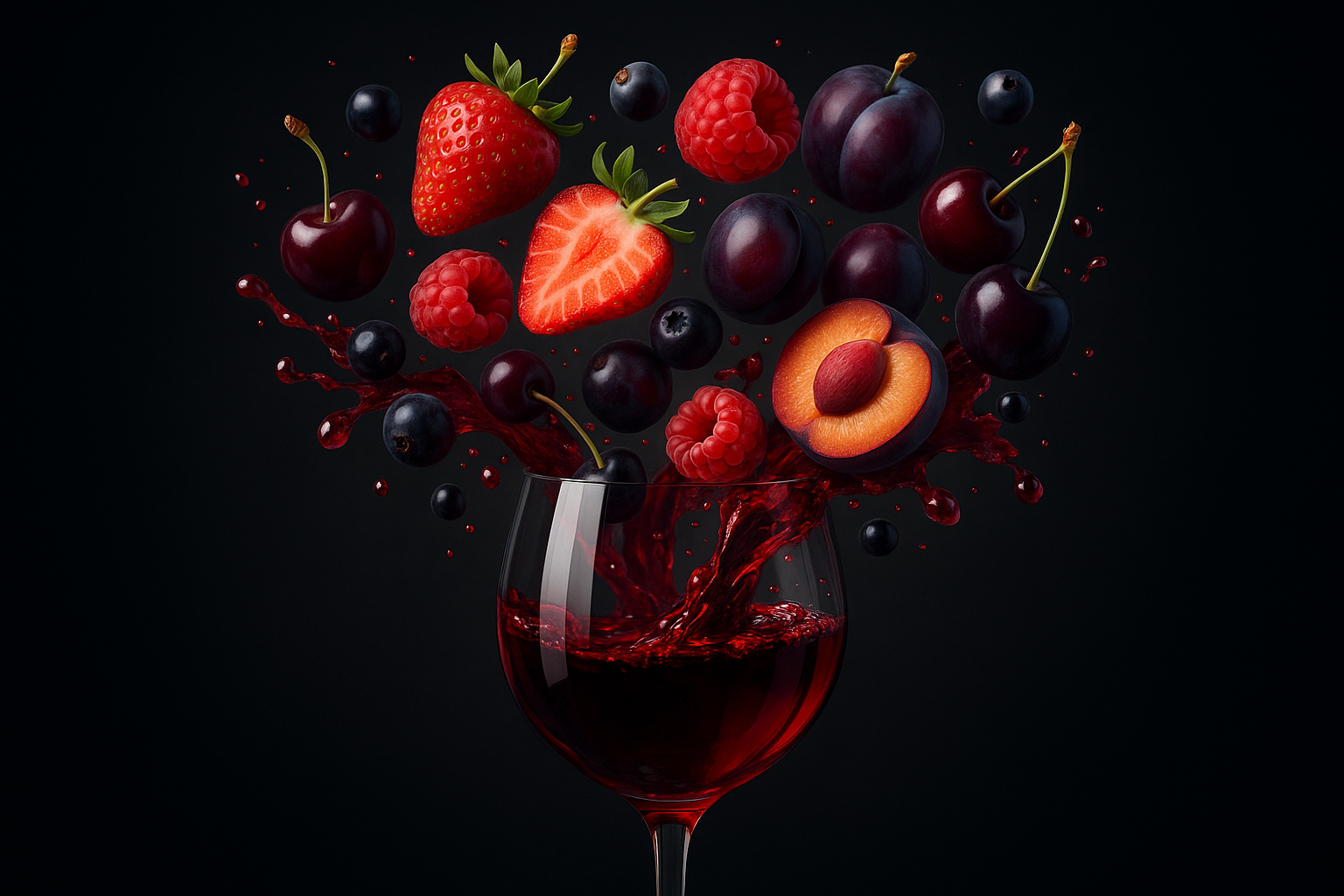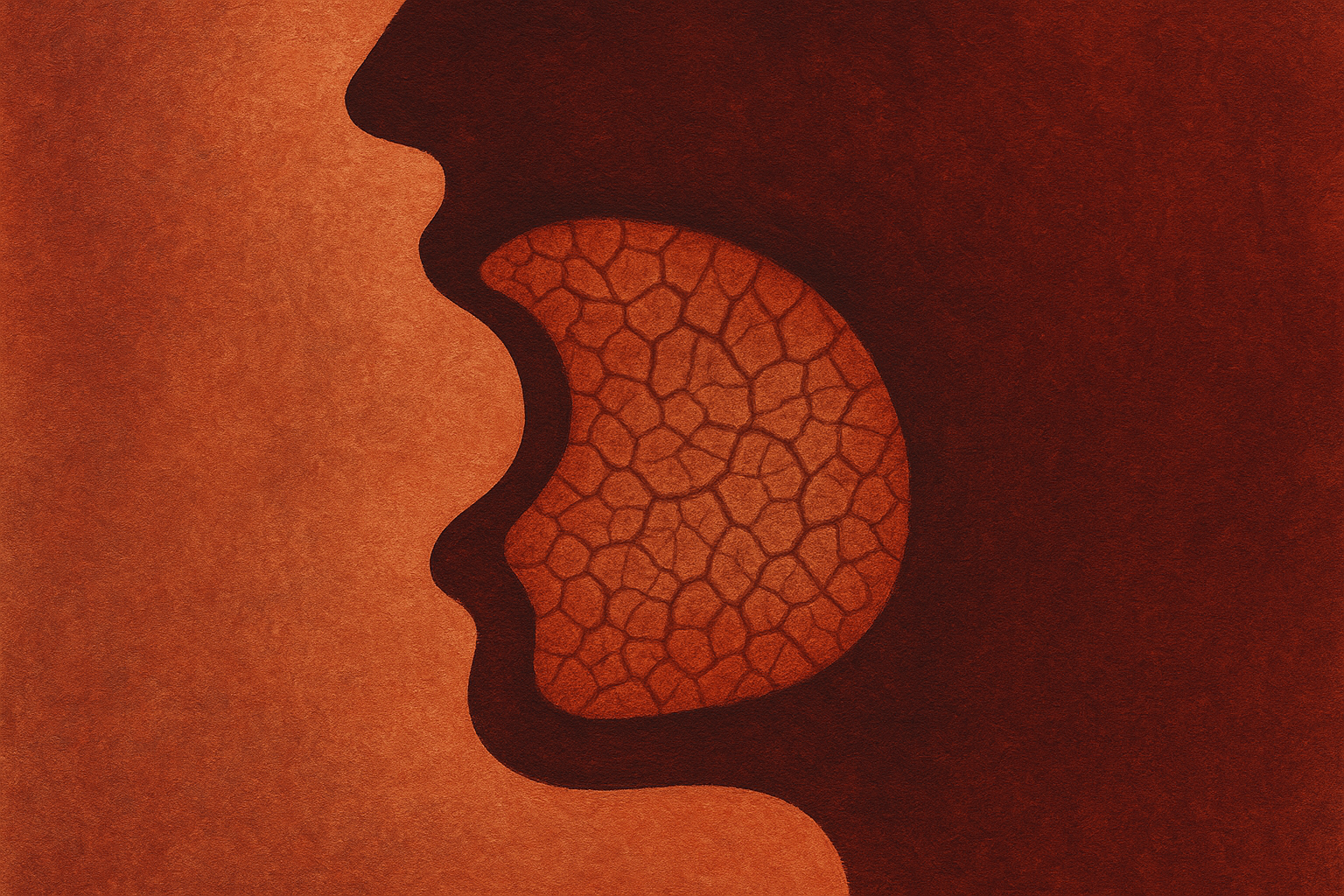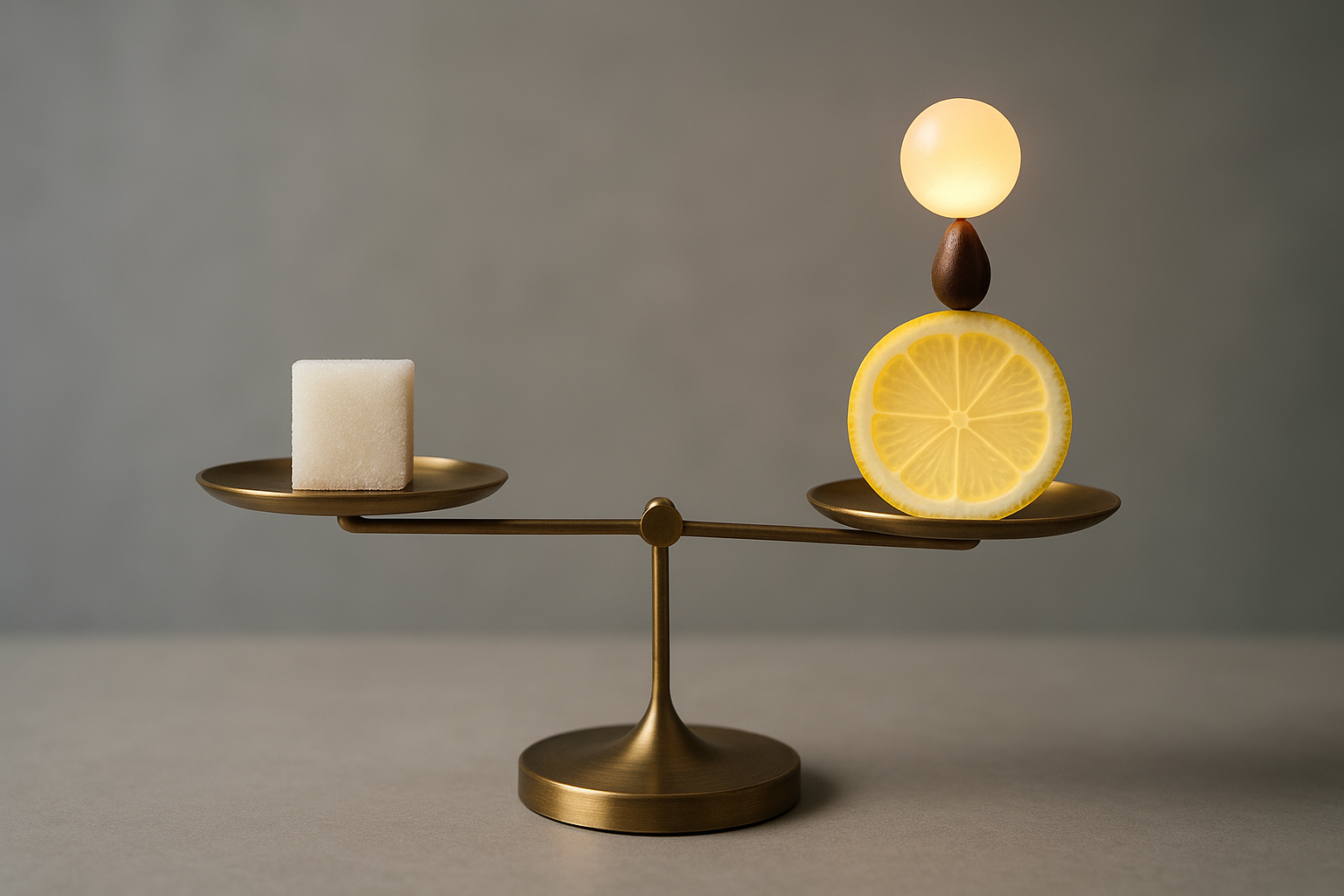Dry vs. Sweet Wine: The Real Difference Explained
Ever been confused by dry vs. sweet wine? Uncover the real difference, which isn't about tasting sugar, but about a process called fermentation.
12 min read
You’re staring at a wine list, and the words start to blur. The server walks over, smiles, and asks the question that sends a tiny jolt of panic through you: “Are you looking for a dry or a sweet wine?”
You nod, trying to look like you know exactly what’s going on. “Umm, dry, I think?”
What does that even mean? Does “dry” mean it’s not wet? Does it leave your mouth feeling like the Sahara desert? And why do some “dry” wines taste so fruity and delicious, which feels… well, sweet?
If you’ve ever felt this way, you are not alone. This is one of the most common points of confusion in the entire world of wine. But here’s the good news: it’s actually very simple.
The difference between a dry wine and a sweet wine has almost nothing to do with how much it tastes like fruit or that drying feeling you sometimes get in your mouth. It all comes down to one simple thing: sugar.
But not in the way you think.
The Secret Life of Yeast: Where Sweetness Goes to Disappear
To understand dry vs. sweet, we need to peek behind the curtain at how wine is made. It’s a bit like magic, but it’s actually a natural process called fermentation.
Here’s the simple version:
- You start with grape juice. This juice is naturally full of sugar. The riper the grape, the more sugar it has.
- You add yeast. These tiny, living organisms are the superheroes of winemaking. Their one job is to eat sugar.
- The Feast Begins. The yeast goes to town, gobbling up all the delicious sugar in the grape juice.
- The Magic Happens. As the yeast eats the sugar, it creates two byproducts: alcohol and carbon dioxide (the bubbles).
This process is the key to everything. The final sweetness of the wine depends entirely on how much sugar the yeast was allowed to eat.

What is a Dry Wine?
A wine is called “dry” when the winemaker lets the yeast eat all, or almost all, of the sugar. The yeast feast continues until there’s virtually no sugar left to eat. The technical term for this leftover sugar is “residual sugar,” or RS. In a dry wine, the residual sugar is so low that our tongues can’t even detect it.
So, a dry wine isn’t the opposite of a wet wine. A dry wine is a wine without sweetness.
Most of the world's most popular wines are made in a dry style. Cabernet Sauvignon, Merlot, Pinot Noir, Sauvignon Blanc, and most Chardonnays are all examples of dry wines.
What is a Sweet Wine?
A wine is called “sweet” (or “off-dry”) when the winemaker intentionally stops the fermentation process early. They hit the brakes before the yeast can eat all the sugar.
How do they do this? They might rapidly chill the wine or add a little sulfur, which stuns the yeast and puts them to sleep. This leaves a noticeable amount of residual sugar in the final wine, making it taste sweet.
Wines like Moscato, many Rieslings, and dessert wines like Port or Sauternes are made this way.
So, the core definition is that simple:
- Dry Wine = No leftover sugar.
- Sweet Wine = Leftover sugar.
But if it’s that simple, why is it still so confusing? Because our brains love to play tricks on us.
The Big Mix-Up: "Fruity" Does Not Mean "Sweet"
This is the most important rule to remember: the flavor of fruit is not the same as the taste of sugar.
Think about it. You can bite into a lemon. It’s intensely “fruity,” right? You can taste the citrus. But is it sweet? Not at all! It’s sour.
The same thing happens in wine. A wine can be packed with the aromas and flavors of ripe, juicy fruit, but still be completely, technically “bone-dry.”
When a wine expert says a wine has notes of “black cherry, raspberry, and plum,” they are describing the flavors they smell and taste. They are not saying it tastes like cherry candy. A completely dry Cabernet Sauvignon can burst with these dark fruit flavors. A bone-dry Sauvignon Blanc can smell and taste like passionfruit and grapefruit.
Your brain smells these wonderful, fruity aromas and thinks, “Ooh, fruit! This is going to be sweet!” But when you taste it, the sweetness you expected isn’t there.

This is where logging your sips can make a huge difference. When you taste a wine, make a note of what you smell first. Then, when you sip, ask yourself a separate question: “Is it actually sugary, or is it just fruity?” The Vinoh app has a dedicated wine palette feature to help you separate these sensations and build your tasting memory.
The confusion between fruity and sweet is just one part of the puzzle. There are other culprits in wine that trick your tongue into thinking “dry.”
The Other Suspects: Meet Tannin, Acidity, and Alcohol
Sweetness is just one of four main components that give a wine its structure and feel. The other three—tannin, acidity, and alcohol—can dramatically change how you perceive a wine, and they often create the sensation people mistakenly call “dry.”
1. Tannins: The Source of the “Drying” Feeling
If you’ve ever had a sip of strong, black tea that’s been steeping for too long, you know what tannins feel like. It’s that rough, slightly bitter, and astringent feeling that makes your tongue stick to the roof of your mouth. It literally makes your mouth feel dry.
This is the #1 reason people think red wines are “dry.”
Tannins are natural compounds that come from the skins, seeds, and stems of grapes. Since red wine is fermented with the grape skins to get its color, it has much higher tannins than white wine.
This feeling has nothing to do with sugar levels. A red wine can have high, drying tannins and still have a little bit of residual sugar. Conversely, a wine can have very low tannins and be bone-dry.
So, when you taste a big, bold Cabernet Sauvignon and your mouth feels like a cotton ball, you’re not tasting “dryness” in the sugar sense. You are feeling tannin.

2. Acidity: The Mouth-Watering Refresher
Acidity is the zesty, tart, and crisp component in wine. It’s what makes your mouth water and leaves you wanting another sip. Think of the refreshing quality of lemonade on a hot day.
Acidity is the opposite of tannin. While tannin dries your mouth out, acidity makes it wet and juicy.
Acidity plays a huge role in balancing sweetness. A wine can have a good amount of residual sugar, but if it also has high acidity, it won’t taste syrupy or cloying. It will taste balanced and crisp. A German Riesling is the perfect example. Many have noticeable sweetness, but their screamingly high acidity makes them one of the most refreshing wines on the planet.
A wine with high acidity and low sugar (like a Sauvignon Blanc) will taste exceptionally crisp and, to many people, very “dry.”
3. Alcohol: The Warmth and Weight
Alcohol contributes to the wine’s body and texture. You perceive it as a feeling of warmth or heat at the back of your throat.
Wines with higher alcohol levels (say, 14% or more) can feel “bigger” or “heavier” in your mouth. This weight and richness can sometimes be perceived as a form of sweetness, even in a bone-dry wine. A big, ripe Zinfandel from California might be technically dry, but its high alcohol and jammy fruit flavors can make it feel “sweet” to some drinkers.

A Simple Guide to the Sweetness Scale
Okay, so we know it’s all about residual sugar (RS). To make it easier, winemakers and experts use a simple scale. The numbers are measured in grams of sugar per liter of wine (g/L).
-
Bone-Dry (Less than 1 g/L RS): You will detect zero sweetness here.
- Examples: Brut Nature Champagne, many French Gamays, Sancerre (Sauvignon Blanc), most Cabernet Sauvignons.
-
Dry (1-10 g/L RS): This is the most common category for table wines. While there might be a tiny trace of sugar, it’s generally undetectable. Over 90% of the wines you find in a store fall into this category.
- Examples: The vast majority of Pinot Noir, Merlot, Chardonnay, Pinot Grigio, etc.
-
Off-Dry (10-35 g/L RS): Here’s where you’ll start to notice a distinct hint of sweetness. It’s not sugary like soda, but there’s a gentle, honeyed quality. This style is fantastic with spicy food.
- Examples: Many German Rieslings, Gewürztraminer, Vouvray, and Prosecco labeled "Extra-Dry" (which is, confusingly, sweeter than "Brut").
-
Sweet (35-120 g/L RS): Now we’re in dessert territory. These wines are clearly and purposefully sweet.
- Examples: Sauternes, Late-Harvest Riesling, Tokaji.
-
Very Sweet (Over 120 g/L RS): These are the richest, most decadent, and syrupy wines.
- Examples: Ice Wine, some Ports, Pedro Ximénez Sherry.
Feeling a little overwhelmed by the categories? Don't be. The best way to learn is to taste. And even better, to record what you taste. When you log a wine in an app like Vinoh, you can make a note of where it falls on this scale. Over time, you’ll build a personal map of your preferences. You might discover you love off-dry Rieslings or that you prefer your reds bone-dry.
How to Spot a Dry or Sweet Wine in the Wild
So how can you tell what you’re getting before you pop the cork? Here are a few tips for your next trip to the wine shop.
-
Read the Label: Sometimes, the bottle tells you everything. Look for key terms.
- For Dry: Dry, Brut, Sec, Secco, Trocken (German).
- For Sweet: Sweet, Demi-Sec, Doux, Dolce, Amabile, Halbtrocken or Lieblich (German).
-
Check the Alcohol (ABV): This is a handy trick, especially for white wines. Remember how yeast eats sugar to make alcohol.
- If a white wine has a low ABV (say, 7-9%), it could be a sign that the yeast didn’t finish its job, leaving behind sugar. Moscato d'Asti is a classic example.
- If a wine has a high ABV (13.5% or more), it often means the yeast ate every last bit of sugar, converting it all into alcohol. This usually points to a dry wine.
- Disclaimer: This is a general guideline, not a perfect rule, but it’s a great starting point.
-
Know Your Grapes and Regions: After a while, you’ll start to remember which grapes and places are known for certain styles.
- Almost Always Dry: Sauvignon Blanc, Chardonnay (unless it's a very cheap, commercial style), Pinot Grigio, Cabernet Sauvignon, Merlot, Pinot Noir.
- Often Can Be Sweet: Riesling, Gewürztraminer, Chenin Blanc (can be dry or sweet!), Moscato.
- Famous Regions: Sancerre in France is famous for bone-dry Sauvignon Blanc. Sauternes, also in France, is world-famous for its sweet dessert wines.
-
Ask for Help!: Wine shop staff and sommeliers love to help. Don’t be shy. Just tell them what you’ve learned. Instead of saying “I want a dry red,” you can now say, “I’m looking for a red wine that’s low in tannins and fruity, but not actually sweet.” See? You already sound like a pro.
Your Adventure Starts Now
The world of wine seems complicated, but it’s built on a few simple ideas. Understanding the difference between dry and sweet is your first, giant leap into that world.
It’s not about a "drying" feeling (that's tannin!). It’s not about fruity flavor. It’s simply about how much sugar the yeast ate during fermentation.
Now, the real fun begins. The only way to truly understand the difference is to taste it for yourself. Go on a mission. Buy a bone-dry Sauvignon Blanc and an off-dry German Riesling. Pour a small glass of each and compare them.
Which one makes your mouth water more? (Acidity)
Which one has a hint of honey on the finish? (Sweetness)
Which one smells more like fruit? (Aromas)
This is where your journey as a wine lover truly takes off. And you don’t have to do it alone. The Vinoh wine journal app was built for exactly this kind of discovery.
- Log your notes: Write down what you taste and feel. Was it dry? Sweet? Tannic?
- Compare with experts: After you log a wine, Vinoh shows you what the pros said. See if you picked up the same things!
- Talk to Soma: Vinoh has an AI assistant named Soma. You can ask it anything. "Soma, what's a good off-dry wine to pair with spicy Thai food?" or "What's the difference between a dry and an off-dry Riesling?" Soma learns your palate and helps turn every pour into an adventure.
- Map your journey: See all the wines you've logged from around the world on a beautiful map.
You now have the knowledge to walk into any wine situation with confidence. So go ahead, explore, taste, and most importantly, enjoy the journey. Cheers!
